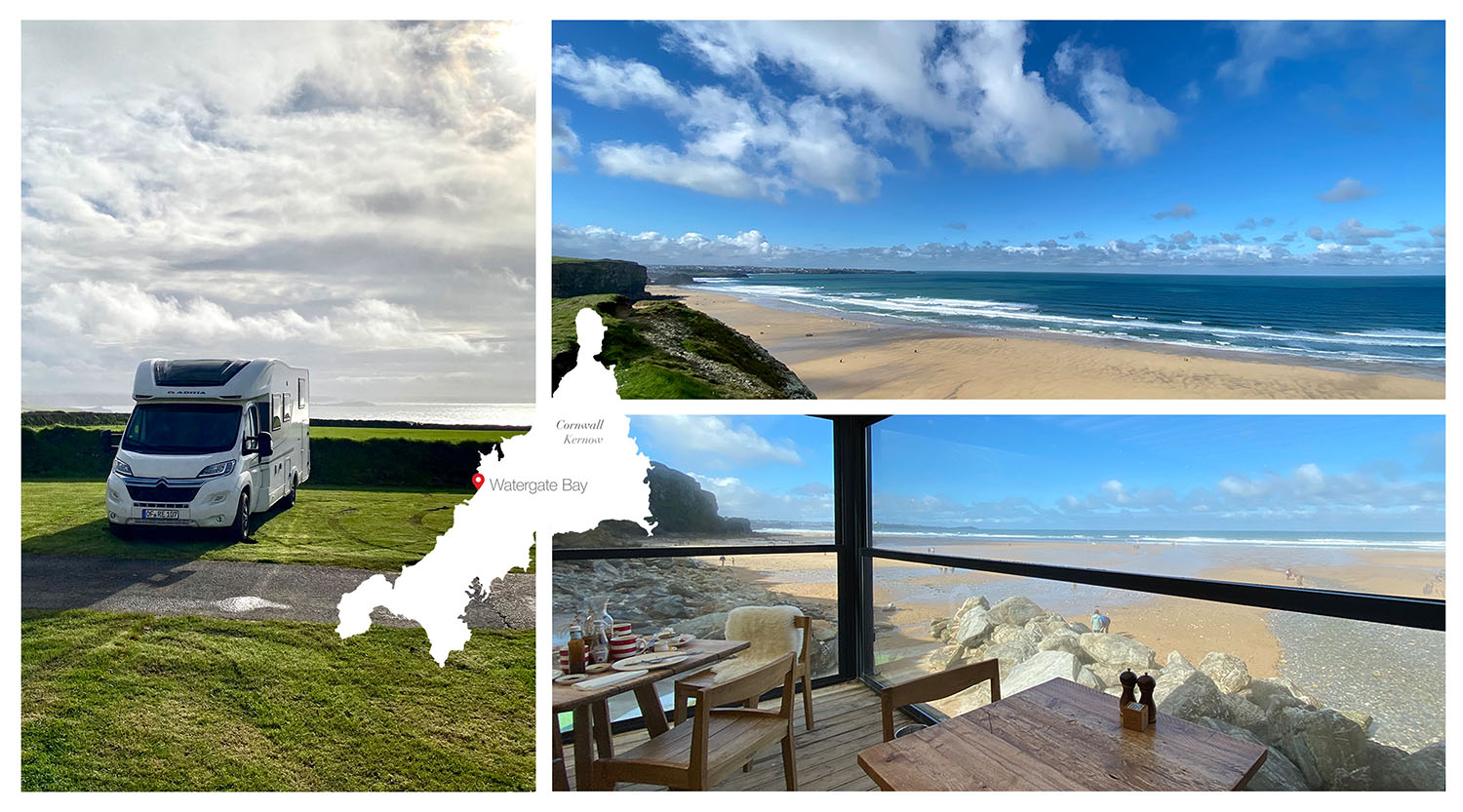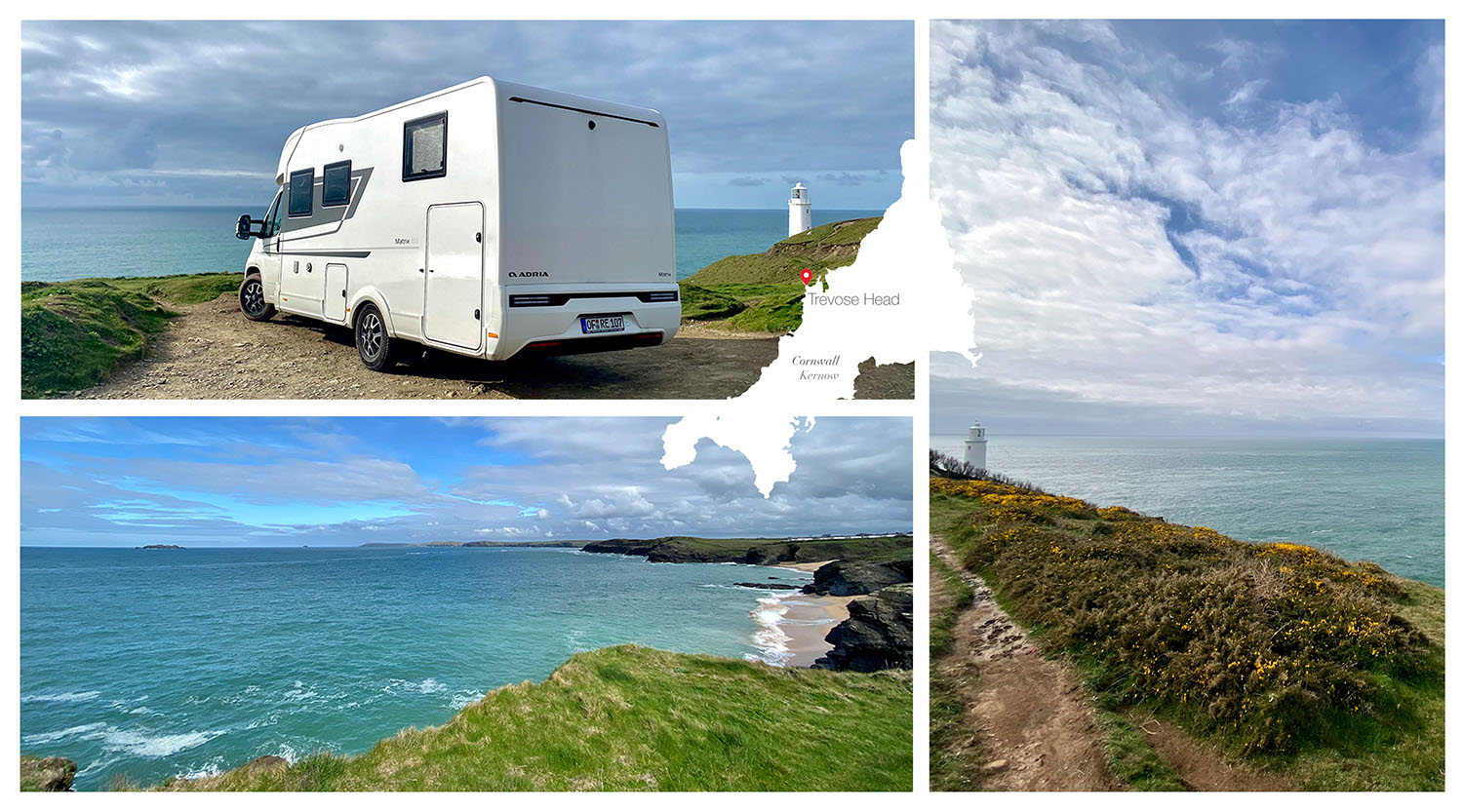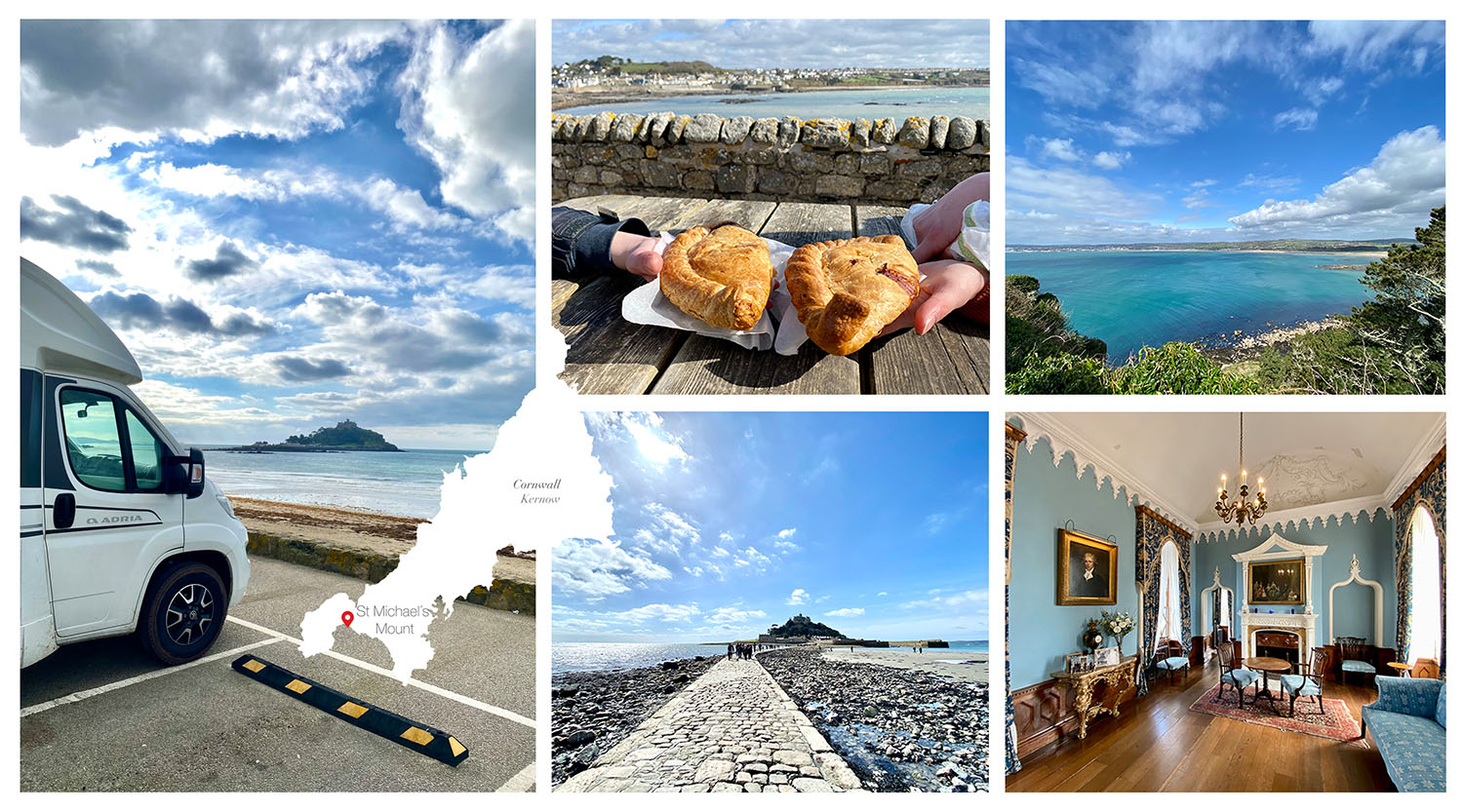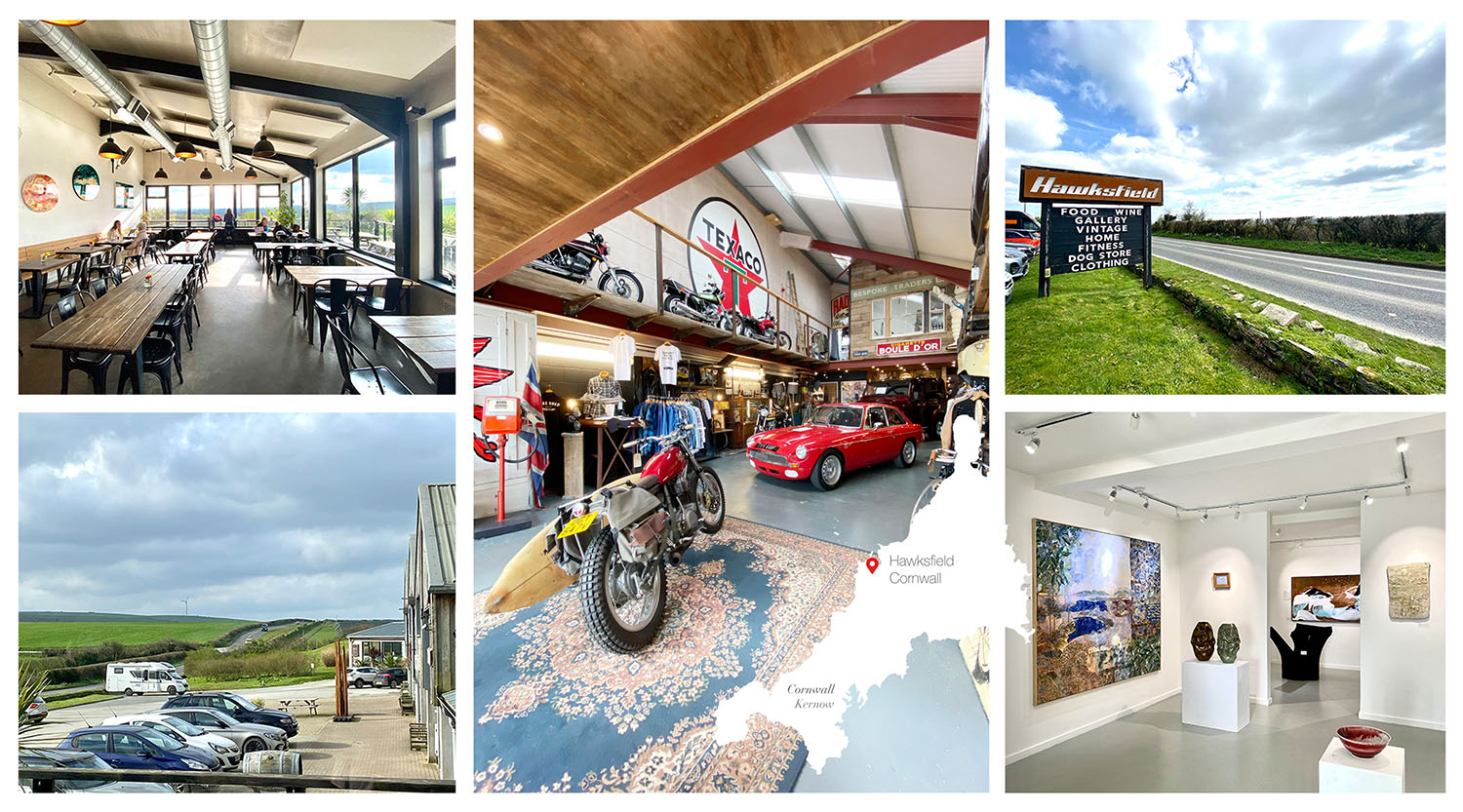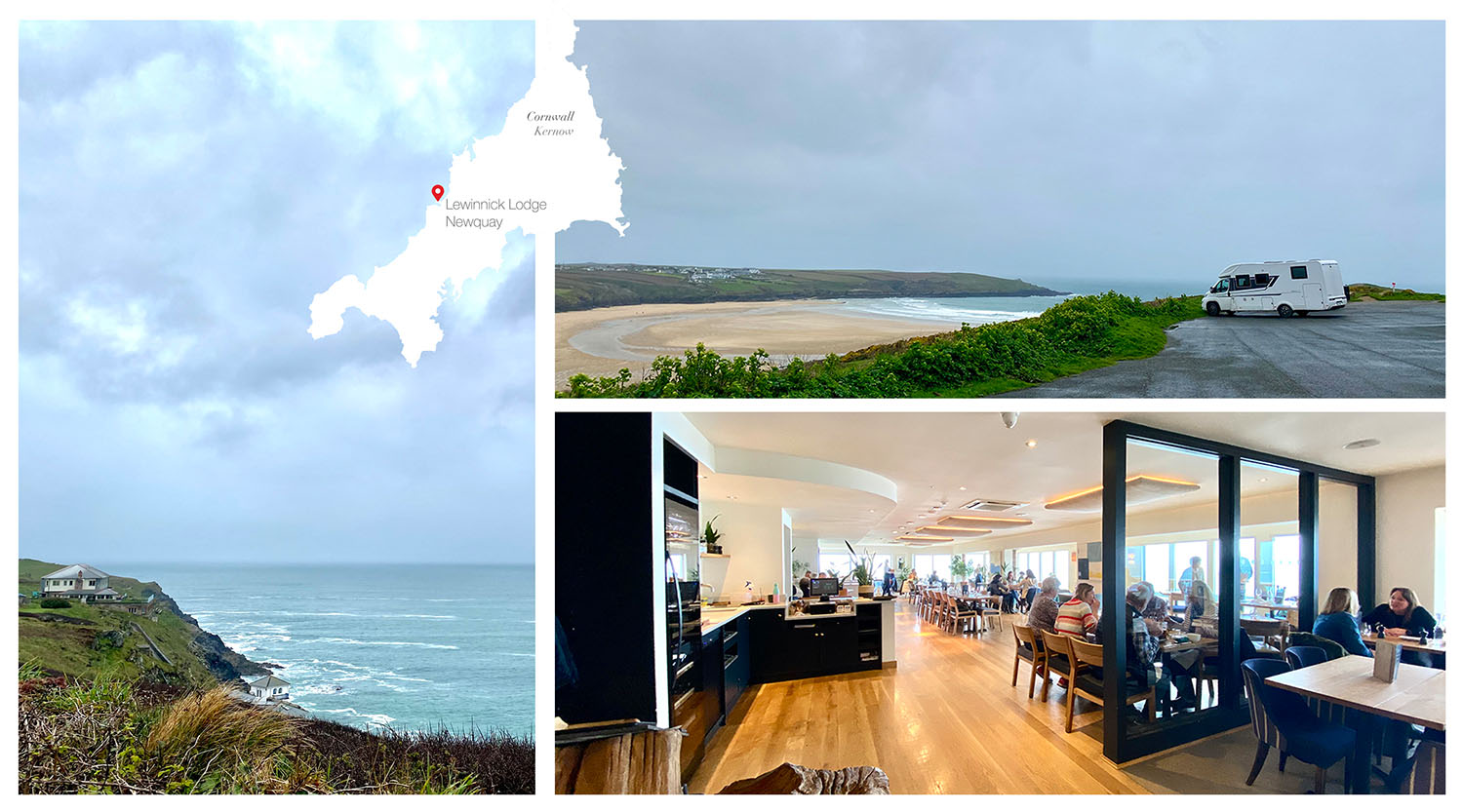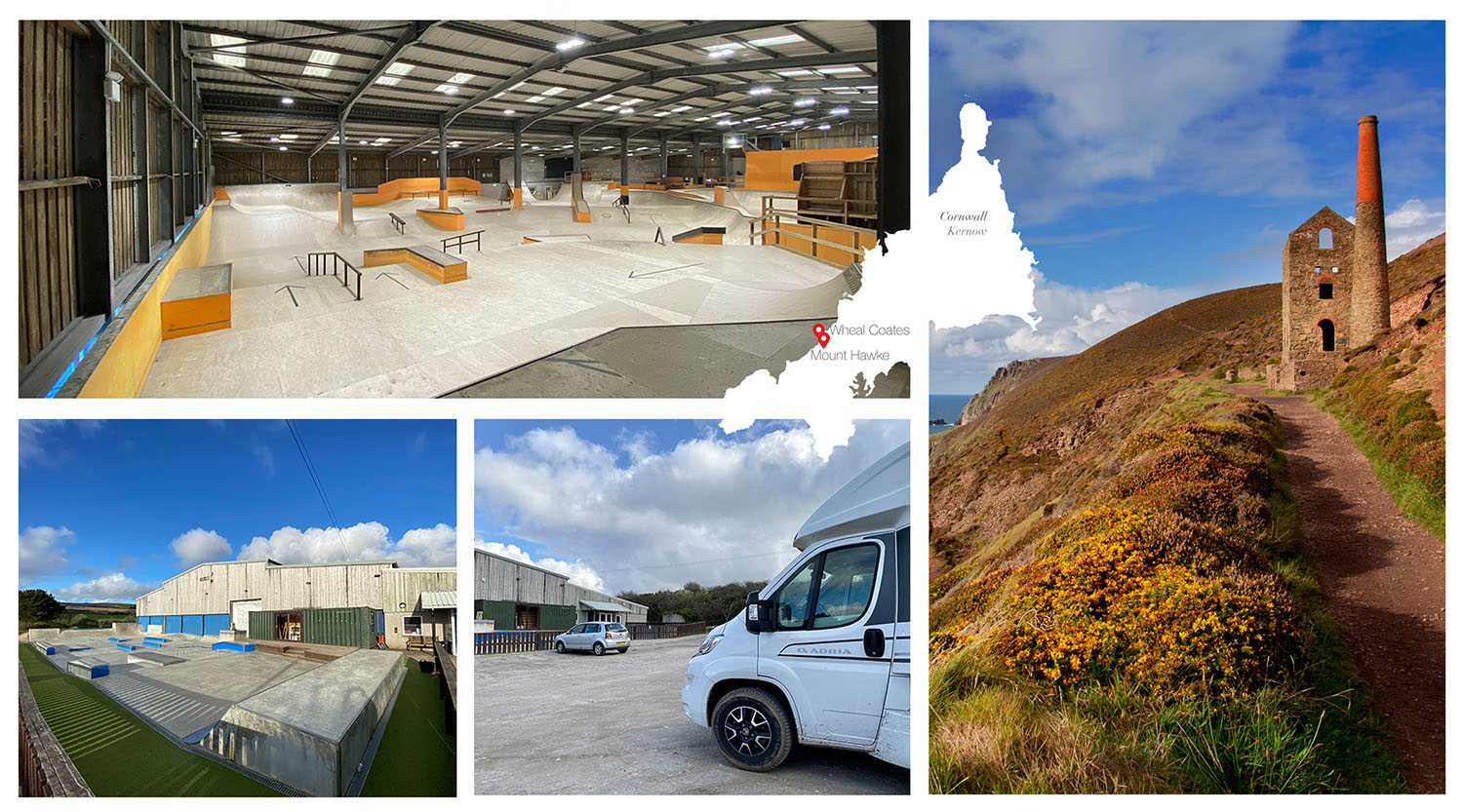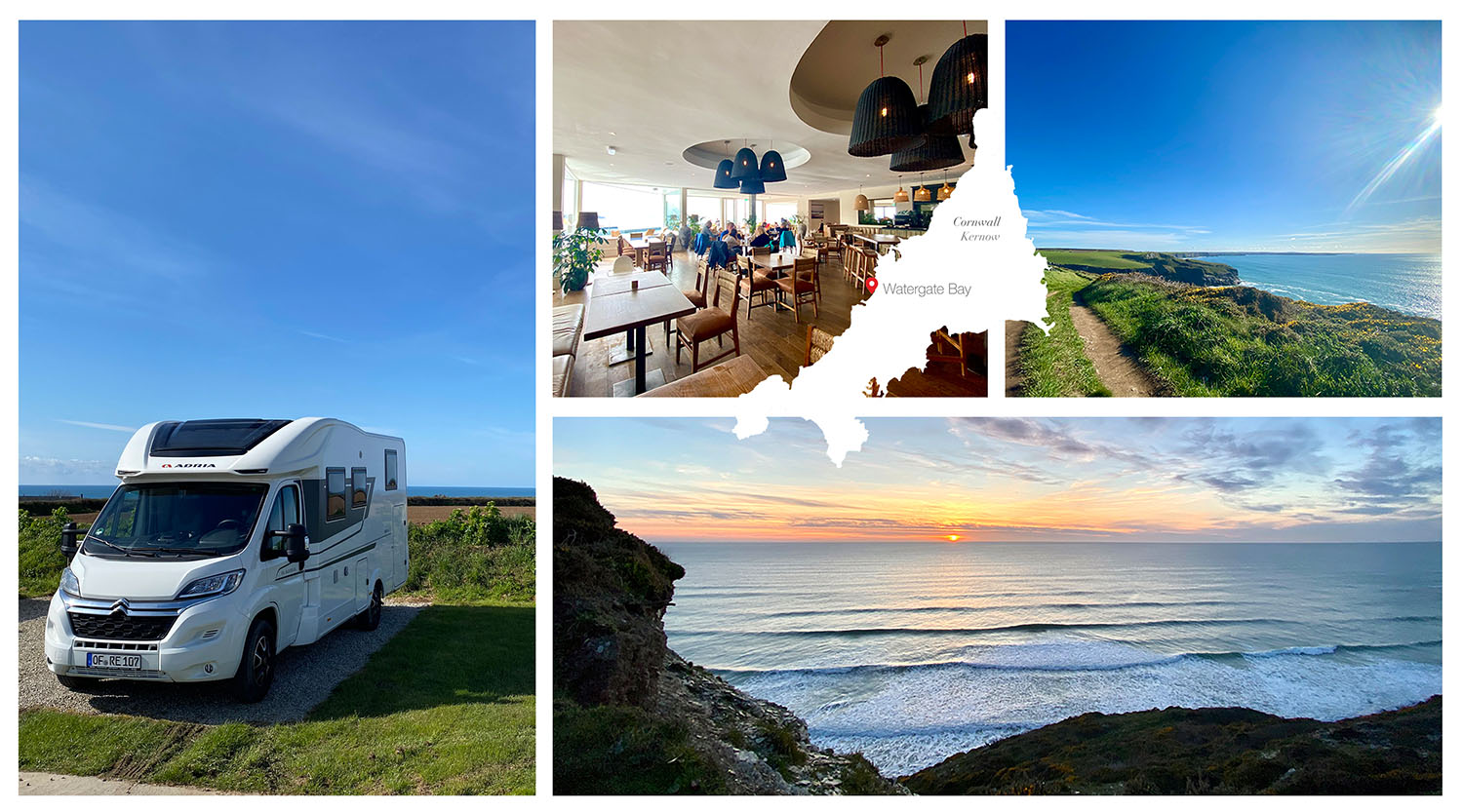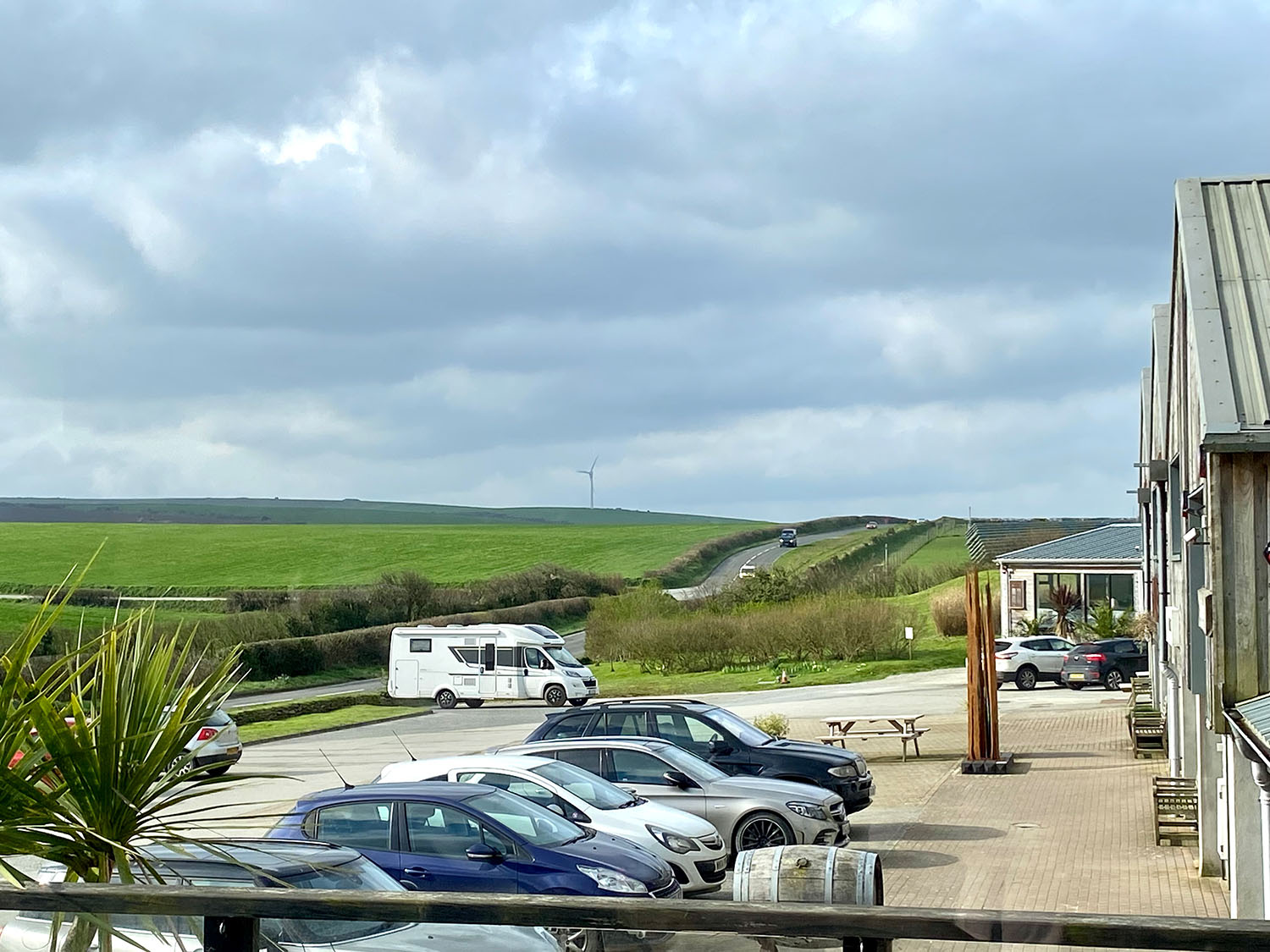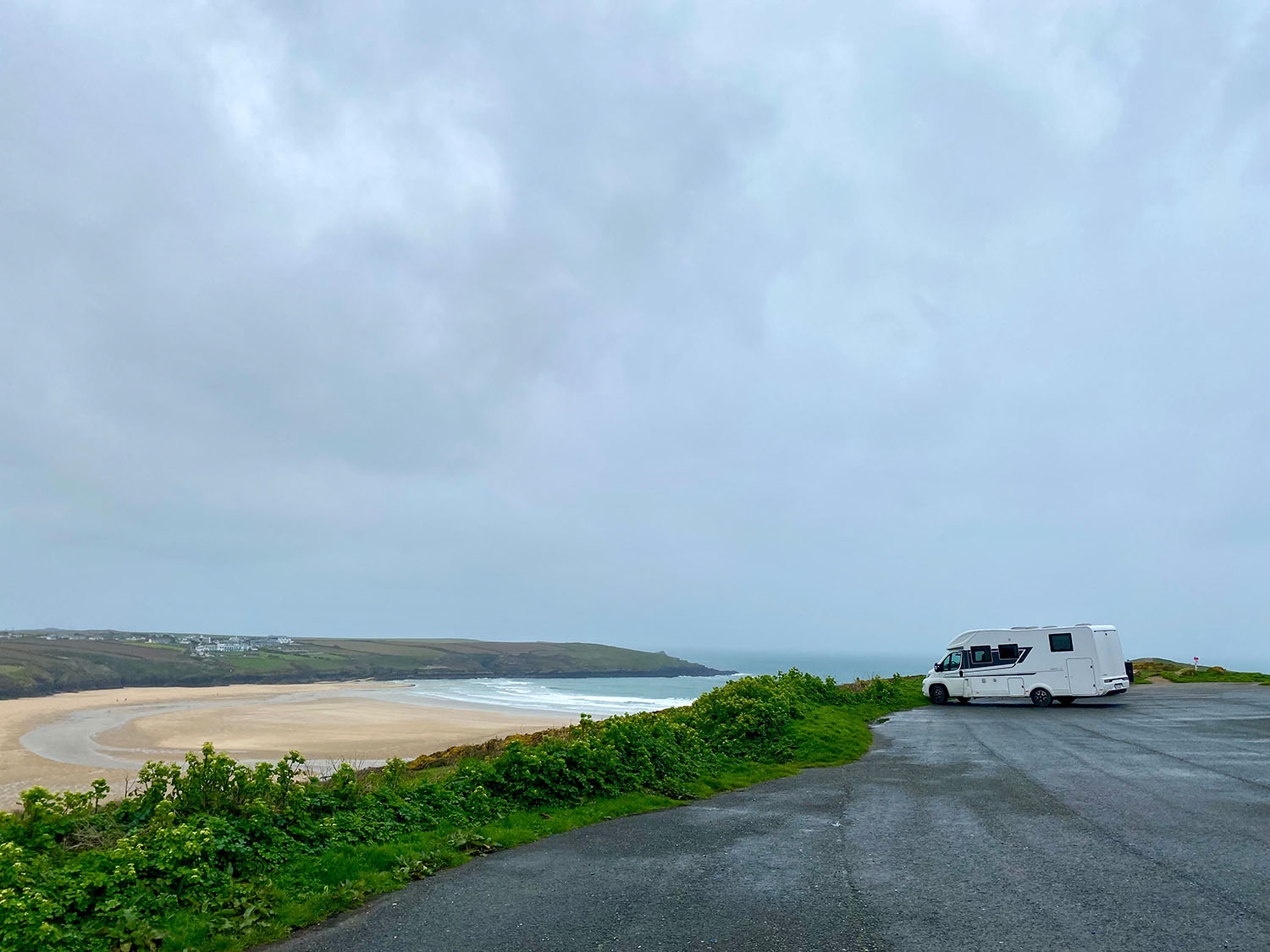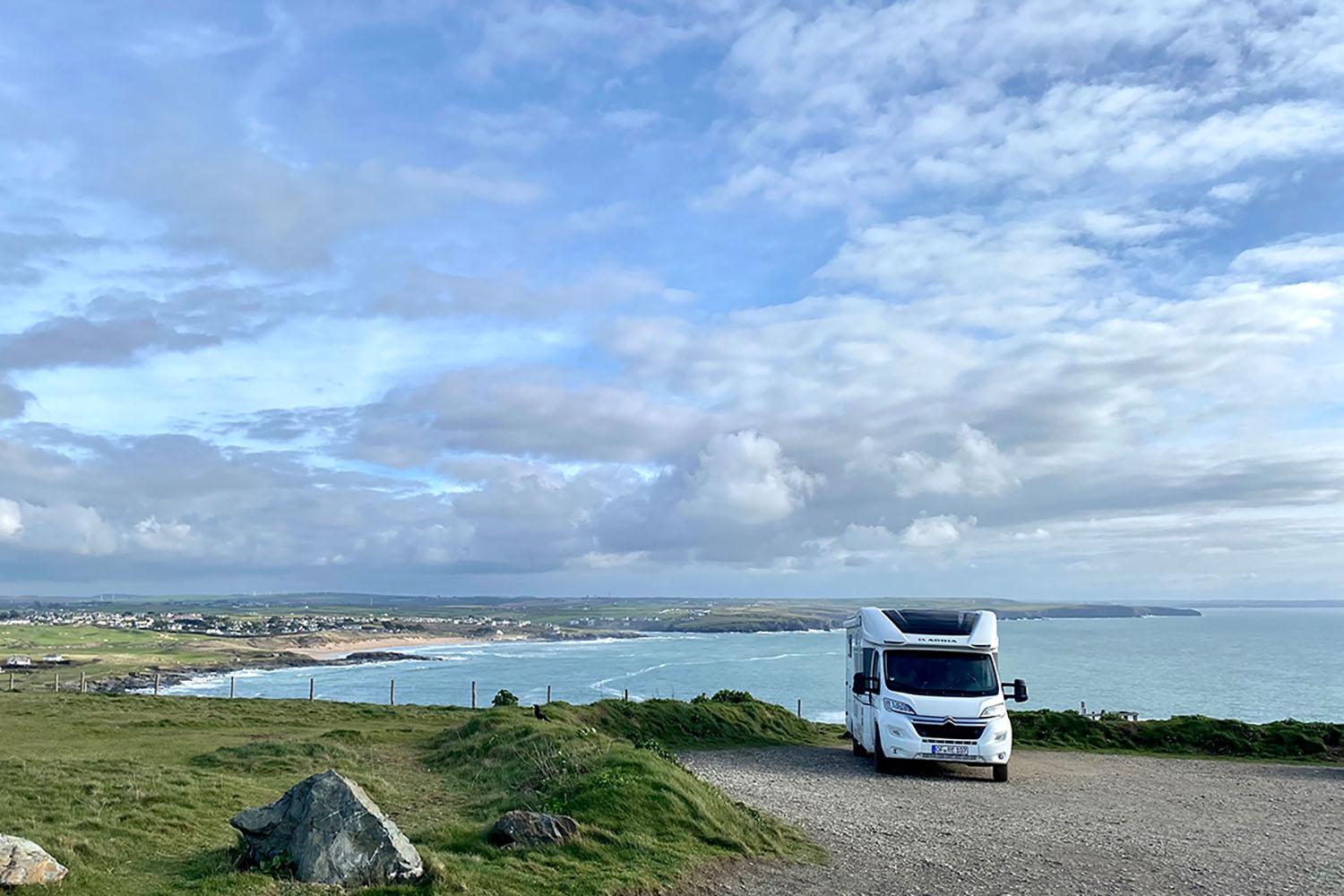
Cornwall in Spring - Travelling to the South West of England by Motorhome
Cornwall was our home for almost a decade. You'd think we'd seen enough of the southwest of England, but we still spend every holiday in Kernow. The only thing different this time is our holiday accommodation: we are travelling in an Adria Matrix Axess 650 SL.
The usual four and a half hour drive to the ferry port in Calais turns into seven. The mixture of the beginning of the holidays, Friday and extremely stormy rainy weather leads to a lot of traffic jams and a, let's call it a 'moderate' driving speed. Once we arrive in Calais, we also have to wait until midnight for the ferry to leave, as all ferry connections to Dover are cancelled for the evening due to the weather conditions.
So we reach England only in the early hours of the morning. As a stopover on the way to Cornwall, we have booked a parking space in Stanford. The Drum Inn' is a cosy English pub where you can park your motorhome overnight. The 'night' is rather short for us due to the delay, and we set off early in the morning. The drive to the southwest of England goes without any problems and in a little more than six hours we reach our destination: 'The View Campsite' in Watergate Bay.
Cornwall was our home for almost a decade. You'd think we'd seen enough of the southwest of England, but we still spend every holiday in Kernow. The only thing different this time is our holiday accommodation: we are travelling in an Adria Matrix Axess 650 SL.
The usual four and a half hour drive to the ferry port in Calais turns into seven. The mixture of the beginning of the holidays, Friday and extremely stormy rainy weather leads to a lot of traffic jams and a, let's call it a 'moderate' driving speed. Once we arrive in Calais, we also have to wait until midnight for the ferry to leave, as all ferry connections to Dover are cancelled for the evening due to the weather conditions.
So we reach England only in the early hours of the morning. As a stopover on the way to Cornwall, we have booked a parking space in Stanford. The Drum Inn' is a cosy English pub where you can park your motorhome overnight. The 'night' is rather short for us due to the delay, and we set off early in the morning. The drive to the southwest of England goes without any problems and in a little more than six hours we reach our destination: 'The View Campsite' in Watergate Bay.
Hints and tips for travelling to Cornwall
The best route for travelling from Dover to Cornwall is via the M20, M26, M25 (23), M4, M5 and A30. The other routes may be slightly shorter, but purely in terms of driving comfort, we would always prefer the motorway to the dual carriageways and country roads. And in the end it's simply faster!
In England, the speed limit on the roads for campervans, motorhomes and caravans is based on the unladen weight of the vehicle! Campervans, motorhomes and caravans with an unladen weight of less than 3.05t are subject to the same speed limits as normal cars - 30 mph (48 km/h) within built-up areas, 60 mph (96 km/h) on single carriageways and 70 mph (112 km/h) on dual carriageways and motorways. If the unladen weight exceeds 3.05t, the speed limit is reduced to 50 mph (80 km/h) on single carriageways and 60 mph (96 km/h) on dual carriageways. The limit within built-up areas remains at 30 mph (48 km/h) and on motorways at 70 mph (112 km/h).
The last stretch into Cornwall, the A30, looks like a motorway, but it's not. It is a dual carriageway. For motorhomes and caravans with an unladen weight of less than 3.05t, the maximum permitted speed remains 70 mph (112 km/h). For campervans, caravans and motorhomes with an unladen weight of more than 3.05t, however, the maximum speed is reduced to 60 mph (97 km/h)! Mobile speed traps or police officers standing on the bridges or in the lay-bys of the A30 with speed measuring devices are almost an everyday sight, especially during the holiday periods, so it is advisable to keep to the speed limit.
Another difference of the dual carriageway to the motorway: tractors and agricultural vehicles are allowed and you may also overtake one or two courageous cyclist. In addition, on the dual carriageway A30 there is actually more than once an access road that leads from the right across the oncoming lanes, and even a traffic light that would be on red in case the farmer wanted to herd his cows from the field on one side to the other side from the A30 ...
In Cornwall
If you want to spend time at the beach or on the coast, always check the 'tide times' in advance. Of pretty much all the beaches in Cornwall, nothing is left of the sandy beach at high tide, the tide brings the water right up to the cliffs. Sections of the beach that can be accessed at low tide are often cut off from beach access by the incoming tide even before the actual 'high tide'!
The roads in the rural areas of Cornwall are narrow. They are usually bordered on the right and left by hedges, under which stone walls are often hidden. But there are always stopping bays where you can let oncoming traffic pass. The good thing about driving a left-hand drive car is that you can always see how much space you have: You can always see how much space you have to the hedge/roadside. Nevertheless, especially in rural areas, drive slowly, especially on bends. And don't just look ahead, left and right, but also upwards: Due to the often onshore wind in Cornwall, many trees grow to the side rather than upwards. Passage for cars is usually not a problem, but with the extra height of a campervan or motorhome, it can be tight or you may have to swerve further into the middle of the road; provided oncoming traffic allows it, of course.
Weather apps are your best friend in the South West of England. Rain and sunshine are often only a few kilometres apart. In addition, the weather can change quickly, so it is advisable to check in the morning of each day. And then just follow the sun! Have fun discovering Cornwall!

